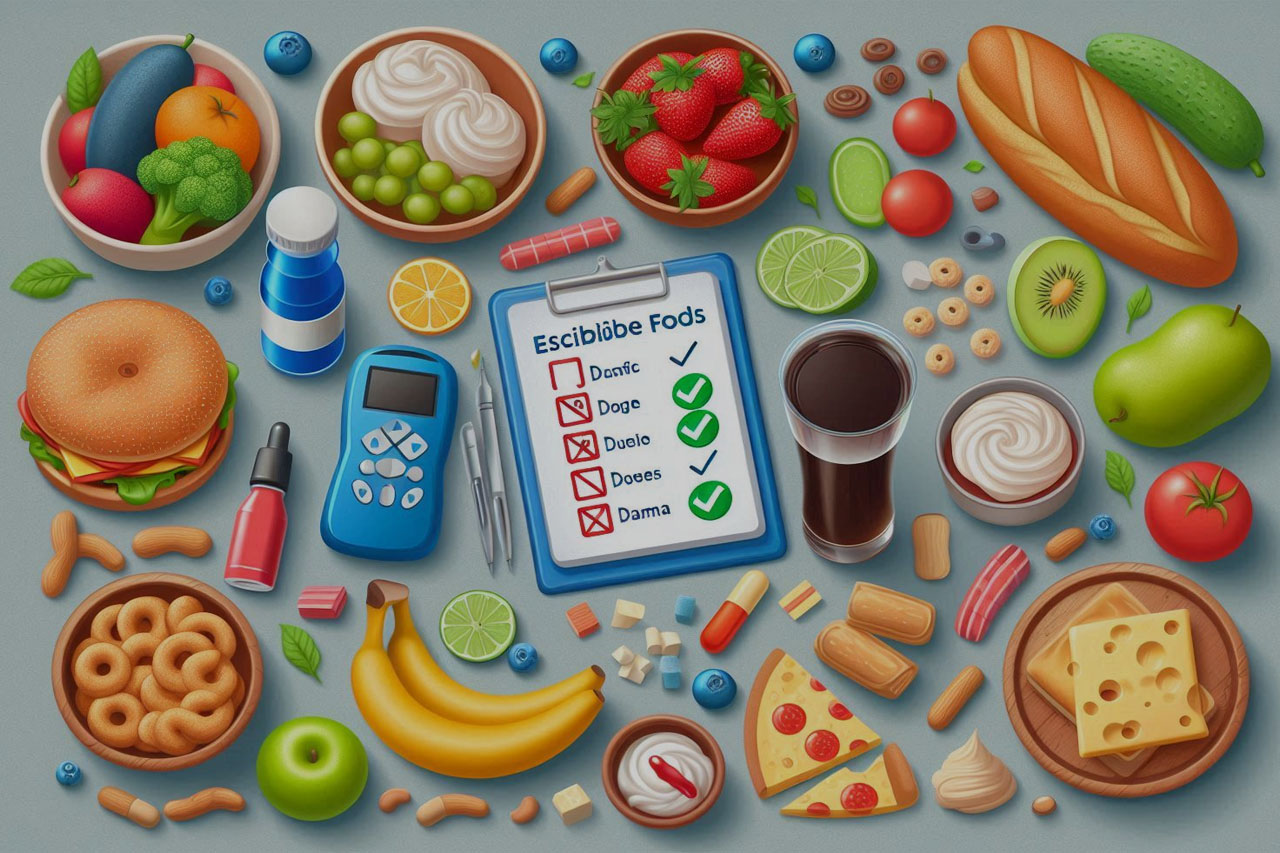What are Diabetic Patients: For millions of people, diabetes is more than simply a medical word; it alters their way of life. When someone is called “diabetic,” it usually indicates they have diabetes, a disorder in which the body struggles to control blood sugar levels. This leads to a careful balancing act in diet management. And what do you know? Here’s where food plays a big role in your health!
The Role of Diet in Diabetes Control
Have you ever thought about how closely eating and blood sugar are related? Our bodies can experience problems in the same way that an automobile can when it is filled with the incorrect kind of fuel. varied foods have varied rates of digestion, which can either raise or lower blood sugar levels. The glycemic index (GI) is relevant in this situation. You may properly manage your diabetes and enjoy life by making better dietary choices with the help of the GI!
[/vc_column_text][/vc_column][/vc_row] Acceptable Foods for Diabetic Patients Now let’s get to the tasty part—what you can consume! Fear not—a wide array of delectable meals exist that are both safe and advantageous for those with diabetes. Whole Grains Whole grains are going to be your new best buddy if you’re ready to give up white bread. Fiber-rich whole grains, such as quinoa, brown rice, and oats, are excellent in regulating blood sugar levels. They also prolong your feeling of fullness, which is a huge plus! Fruits and Vegetables Consuming a diet richer in fruits and vegetables is not only advantageous but also necessary! These foods are rich in fiber and vitamins. Among the best fruits for diabetes are berries, apples, and citrus fruits. Furthermore, vibrant vegetables like bell peppers and rich greens make excellent vegetable choices. Lean Proteins Protein is an excellent source of satiety and can aid in the healing of muscles. Lean protein sources to consider include fish, poultry, beans, lentils, and turkey. They offer the essential nutrients without the extra health risks associated with saturated fats. Healthy Fats Let us now dispel the idea that obesity is bad for you! Nuts, seeds, avocados, and olive oil are good sources of healthy fats that can help maintain heart health, which is important for diabetics. Dairy Options Dairy products still contain calcium, so don’t avoid them. Choose low-fat milk and yogurt. These dairy options offer all the nutrition you need without all the extra sugar. Portion Control: The Key to Managing Diet How much should you eat now that you know what to eat? Controlling portion sizes is essential for managing diabetes. Eating more food can cause your body to metabolize sugar more slowly. It makes all the difference to use smaller dishes, measure serving sizes, and pay attention to your hunger cues. Excluded Foods for Diabetic Patients There are many different foods to enjoy, but some must be drastically reduced or avoided. Sugary Snacks and Beverages Although the sweet food may taste wonderful, it can raise blood sugar levels more quickly than you can say “heap of sugar.” Avoid sugar-filled sodas, sweets, and baked products. Additionally, always read labels; you might be surprised by hidden sugars! Processed Foods Preservatives, those annoying hidden sugars, and dangerous trans fats can all be found in plenty in processed meals. While packaged snacks and quick meals may seem handy, they can cause severe blood glucose spikes and falls. Refined Carbohydrates This includes white bread, pastries, and a lot of breakfast cereals. When refined carbohydrates enter your system, they can quickly raise blood glucose levels, much like sugar does. Choosing whole grain substitutes is a wise decision! High-Sodium Foods Another concern for many diabetics is blood pressure problems, which can be exacerbated by high-sodium diets. Watch the labels of processed foods and snacks because they frequently include hidden salt levels! Balancing Your Diet: Creating a Meal Plan Now that you are aware of which meals are allowed and which are not, how can you strike a balance? It may take some trial and error to create a personalized meal plan. A quick way to keep your plate balanced is to use the plate technique, which calls for half of your plate to be vegetables, 1/4 of your plate to be protein, and 1/4 of your plate to be grains. Consultation with Healthcare Professionals It can be intimidating to navigate the world of diabetic-friendly food on your own. For this reason, speaking with nutritionists or your medical professional can be really beneficial! Your meal plan can be customized to meet your unique needs, so it doesn’t feel restrictive and instead fits into your life naturally. Conclusion Diabetes does not have to imply boring, miserable food. It all comes down to choosing the correct foods in moderation, exercising mindfulness, and indulging in pleasures sometimes. You can maintain a balanced diet that pleases your taste buds and regulates your blood sugar with the correct information and awareness. So let’s embrace a happy, balanced eating style that fits your busy schedule! FAQs Do diabetics have to avoid sugar? Is eating fruit safe for those with diabetes? How do I indulge my cravings without going against my diet plan? What function does fiber serve in a diet for diabetics? How can I choose meals that are healthy when I’m eating out?
Yes, but the key is moderation. Limit your intake and go for treats made with natural sweeteners.
Of course! Just choose fruits with a lower GI and pay attention to portion proportions.
Balance is essential, so seek out healthier options, monitor portion sizes, and avoid depriving yourself!
Fiber helps to control blood sugar levels and keeps you feeling full by slowing down the absorption of carbohydrates.
When feasible, look up the nutrition statistics, choose for grilled instead of fried, and don’t be afraid to alter your order!





